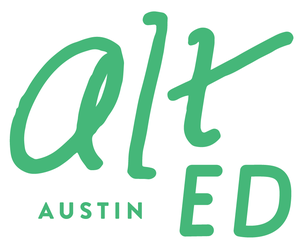Come one, come all, to the Austin Alternative School Fair 2017!
/Get out your calendar, circle February 25, and rally the kids of all ages!
The nonprofit Education Transformation Alliance is joining with sponsors Free Fun in Austin, Whole Foods Market, and Alt Ed Austin to host the annual Austin Alternative School Fair on February 25, from 11a.m. to 2 p.m. at the Whole Foods Market rooftop plaza.
Check out the event’s Facebook page for updates over the next few weeks.
We like to think we’re doing our part to “Keep Austin Weird” for kids by bringing together highly innovative, creative educators to share information about the number and variety of learning options in our area.
Parents and kids will have a chance to meet with the folks who run schools, enrichment programs, and educational services. The fair is set up on the plaza near the playground and features engaging activities for teens and younger kids, including virtual reality experiences, 3D printing, computer games, a mini nature museum, assorted crafts, as well as movement-based fun like sock poi and flow arts. And of course, there will be healthy food and drinks for sale from Whole Foods.
Alt Ed Austin is proud to sponsor the event again this year. It’s always a chance to talk and share in a relaxed, fun setting. We’re lucky—and more important, our kids are lucky—to have such a caring community of educators.
Participants this year include:
- Abrome (K–12th)
- AHB Community School (K–8th)
- Clearview Sudbury School (K–12th)
- French School of Austin (PreK–8th
- Fusion Academy (6-12th)
- Game of Village (enrichment program for ages 9–14)
- Growing Curiosity (PreK)
- Inside Outside School (K–5th)
- Integrity Academy (PreK–12th)
- KoSchool (8th–12th)
- Progress School (K–8th)
- Radicle Roots Community Schoolhouse (K–8th)
- Sansori High School (9th–12th)
- Skybridge Academy (6th–12th)
- Synergy Middle School (enrolling ages 11–13 for 2017)
- Whole Life Learning Center (PreK–8th)
- WonderWell (ages 2 through PreK & Kinder)








![Photo by Larry D. Moore [CC BY-SA 3.0 or GFDL], via Wikimedia Commons](https://images.squarespace-cdn.com/content/v1/54d27ffde4b0efe7320caf64/1470091440345-L80367KNGLS0M0I7BM1I/image-asset.jpeg)










